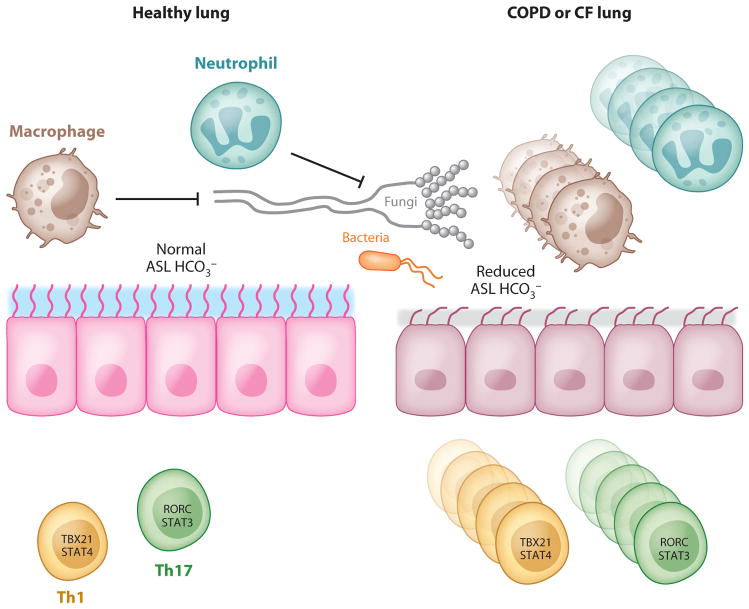Figure 5.
Proposed model of T cell responses in chronic lung disease. In the context of COPD or CF, lung epithelial cells have reduced anion transport (Cl− and HCO3−), leading to reduced airway surface liquid (ASL) volume and reduced antimicrobial activity. This can result in pathogen persistence and constitutive T cell activation and proliferation, leading to parenchymal lung damage.

